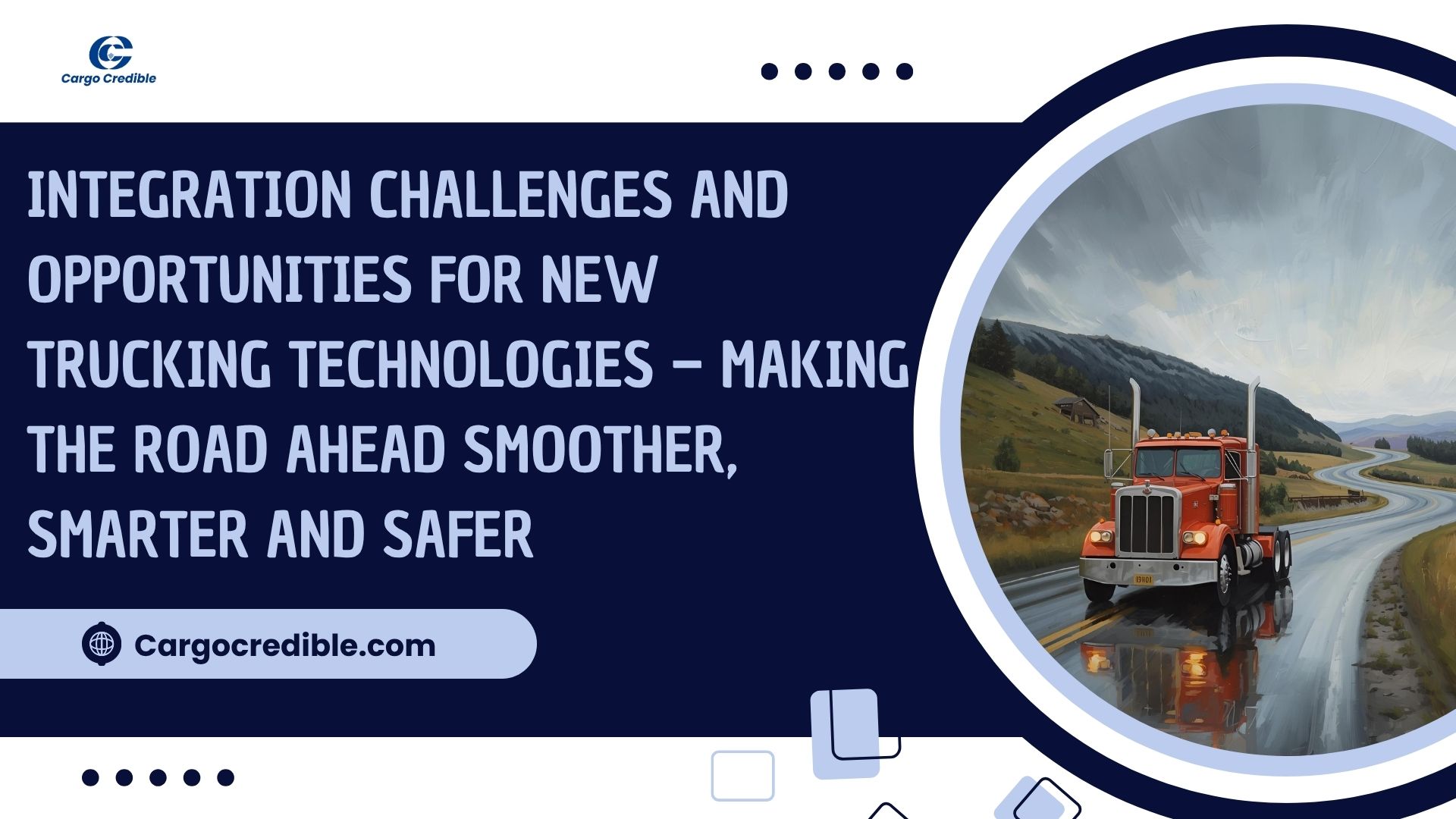Integration Challenges and Opportunities for New Trucking Technologies – Making the Road Ahead Smoother, Smarter & Safer

Trucking is on the brink of a technological revolution. New innovations like autonomous driving, electric powertrains, AI-based route planning, and connected telematics are not future dreams—they are rapidly becoming part of real-world trucking. However, the key to unlocking their true potential lies in integration—the ability to seamlessly connect new technologies with existing trucks, systems, and processes. This blog dives deep into what integration means in trucking technology, the biggest challenges the industry faces, and the exciting opportunities that come when these challenges are overcome.
What Does Integration Mean in Trucking Technology?
In trucking, integration is about making sure that all pieces of technology—from the truck engine to the driver’s dashboard, and from telematics devices to fleet management software—work smoothly together. This means ensuring data flows seamlessly between old and new systems so that trucks can perform smarter, safer, and more efficiently.
For example, a modern electric truck outfitted with sensors and AI-based safety features needs to share critical information with a central fleet system and with human drivers in real time. The integration challenge is making sure the truck’s digital “language” connects with legacy freight dispatch software and driver interfaces without friction.
The Major Challenges of Technology Integration
Despite the promise of new tech, successfully integrating these systems across the diverse and often aging trucking landscape presents several hurdles:
1. Legacy Trucks and Systems
Many trucking fleets operate trucks that are 10 or even 20 years old. These vehicles were never designed for digital transformation and lack the connectivity features of modern trucks. Adding new, data-heavy technology to older trucks can be like plugging a USB drive into a cassette player—without the right adapters and retrofit kits, it simply won’t work.
Solution: Development of modular retrofit kits and phased fleet upgrades can allow fleets to adopt new tech gradually without the need for immediate, costly full replacements.
2. Multiple Languages and Systems
Trucking technologies come from a variety of manufacturers and software providers, each using different platforms, protocols, and communication standards. This creates confusion and incompatibility—like trying to play a game where everyone has a different set of rules.
Solution: Open APIs and industry-wide standards serve as translators, enabling different systems to communicate and work together effectively.
3. Training and Change Management
New technologies, no matter how advanced, will fail if drivers and fleet staff are not adequately trained. Complex or distracting interfaces can overwhelm users and lead to underutilization or errors on the road.
Solution: User-friendly designs, hands-on training programs, and incremental rollouts that allow gradual adjustment improve adoption and effectiveness.
4. High Costs
New truck technologies—including sensors, onboard AI systems, and electric drivetrains—can be expensive. For smaller and mid-sized fleets, upfront investment costs pose serious barriers.
Solution: Leasing options, technology-as-a-service models, and government subsidies help ease the financial burden and make innovation accessible.
5. Cybersecurity Concerns
As trucks become connected hubs of data, the risk of cyberattacks grows. A hacked truck could present safety risks as well as data breaches.
Solution: Implementing robust encryption, continuous software updates, and proactive cybersecurity protocols protects data integrity and vehicle safety.
Opportunities Unlocked by Integration
When integration is done well, the benefits for fleets, drivers, and the entire supply chain are transformative.
Safety on the Roads
Integrated systems empower trucks with technologies like automatic emergency braking, lane departure warnings, and fatigue detection. Sharing data between trucks and infrastructure can prevent collisions, markedly improving road safety and reducing insurance costs.
Cost Efficiency and Sustainability
Integrated route optimization and predictive maintenance minimize fuel consumption and prevent costly breakdowns. Electric and hybrid powertrains, paired with smart driving data, create greener trucking operations that lower emissions and operating costs.
Enhanced Driver Experience
Technology takes over mundane tasks like paperwork and constant route recalculations, allowing drivers to focus on safe driving. Analytics also help identify the best rest stops and driving windows, improving working conditions.
Smarter Fleet Management
Real-time data from integrated trucks gives fleet managers a crystal-clear picture of cargo status, driver performance, and vehicle health—making decision-making faster and more accurate.
Emerging Innovations with Potential
Several cutting-edge but underexplored technologies promise even more future benefits:
- Edge Computing: Enables trucks to process critical data locally, reducing reliance on slow or unreliable cloud connections.
- Digital Twins: Virtual models of trucks simulate and predict issues before they cause breakdowns.
- Blockchain for Freight Tracking: Offers secure, transparent records that prevent disputes and ensure supply chain integrity.
Building the Road Ahead
Real transformation requires more than just advanced gadgets. It demands collaborative efforts to establish common industry standards, build tech-ready trucks, fund infrastructure like charging stations, and invest in education and cybersecurity. Truck manufacturers, technology providers, fleets, and regulators all have a role in ensuring new and old technologies can work together smoothly and safely. The future of trucking is not about isolated breakthroughs but about creating an organized, connected ecosystem where every piece—from legacy trucks to the latest AI system—fits into a smarter, safer whole.
Comments (0)
- No comments yet.